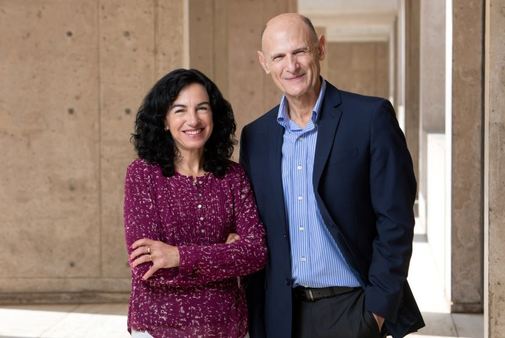- Research.Izpisúa creates a synthetic embryo, a model to understand pregnancy
Maybe the forty are the new thirty and maybe the jeans he wore in high school are still perfect, but all that does not matter to the biological clock of his ovaries. Girls are born with a specific number of oocytes or ovules - it has been estimated at around one million - waiting in the follicles, a spherical structure with liquid, where these cells mature. As women turn years, the oocyte reserve is naturally reduced, both in quantity and also in quality.
The functional decline of the ovaries is obvious in a decrease in fertility, which begins years before menopause. The ovary is, in fact, one of the organs that first ages . It is known that its decline begins around 35 years. On the other hand, the mechanisms in the cells that start that downhill are not well known. Now, and for the first time, scientists in the United States and China, under the co-direction of the Salk Institute professor Juan Carlos Izpisúa, describe in detail how the ovaries of monkeys age, the experimental laboratory model that most closely matches the human being .
The analysis, exposed in the pages of the journal Cell that also dedicates its cover this week , sheds light on new biomarkers of ovarian aging and raises possible ways to rejuvenate the oocytes and extend the period of female fertility.
Beyond the impact on women's reproductive capacity, delaying menopause could imply a healthier longevity, as one of the Salk researchers participating in this work states, Concepción Rodríguez Esteban : "One of the main objectives of the research in geroscience it is to define markers of aging.In this study we describe the discovery of new diagnostic markers for ovarian aging in monkeys and humans.These markers, as well as the molecular knowledge obtained, will be key in the development of interventions to promote more aging. healthy . "
Researchers have compared 2,601 ovarian cells of young (4-5 years old) and old (19-20 year old) macaque females, somewhat comparable to women aged 16 and 60, respectively . In this type of monkeys, menopause appears at the age of 25, so the older animals studied were around menopause.
"Our goal was to analyze each of the ovarian cell types in relation to their gene expression patterns to better understand the exact aging process," says Jing Qu, co-director of the study, professor at the Academy of Chinese Sciences and former postdoctoral researcher at the Gene Expression laboratory run by Izpisúa .
This analysis of the active genes in each type of ovarian cell has allowed us to map the changes in activated genes (the transcriptome) that are associated with aging . As the cells grow older, some of the genes involved in the fight against cellular oxidative stress lose activity and this explains the loss of organ function.
"There is a decrease in all oxidative metabolism in those few years. It is something we have heard many times: for example, we know the antioxidant capacity of certain foods to help us fight certain diseases associated with aging. Now we know that this decrease in Antioxidant capacity is related to the loss of functionality of many of our organs, particularly the ovary, "Izpisúa specifies to this newspaper.
In addition, when comparing the data obtained from monkeys with ovarian cells from healthy women between 21 and 46 years old, they have verified that the activity of two genes involved in antioxidation ( IDH1 and NDUFB10 ) is clearly also reduced in human cells. To ensure the meaning of this decrease in activity, they developed human cells with the two genes disabled. The result: they looked old and very similar to those of older monkeys. This concrete finding is the basis of a new study, where they will try to "modify the ovarian niche to allow a better quality of the oocyte and an extension in time of its functionality, " says Izpisúa.
Closest animal model
According to the Chinese calendar, 2020 is the year of the rat, but in the laboratory, the animal that claims prominence is the monkey. Izpisúa considers that "although there is no doubt that the experimental animal models used so far in the laboratory are providing us with relevant information on aging, I am convinced of the need to investigate in primates if we really want that knowledge to be transferred to the clinic with the purpose of extending our years of healthy life. "
In the specific case of the ovary, the similarity between morphology, physiological responses and the menstrual cycle between humans and cynomolgus monkeys "makes nonhuman primates an ideal model to study the aging of the ovary and the development of interventions against this aging "highlights. This experimentation model together with artificial intelligence techniques with which to interpret a huge amount of data extracted from the studies constitute the basis for the research scientist to better understand how we age.
The research published today is the beginning of a series of works to analyze, cell by cell, other organs during aging . "These studies will come to light in the coming months, where we will also try to understand at the molecular level how certain interventions, for example, caloric restriction, affect the functioning of our organs and tissues and how this could result in greater longevity and quality of life".
According to the criteria of The Trust Project
Know more- Science and Health
Health The cancer rate in the US records a record decline in one year
Environment Eco-design to make the perfect packaging
United Kingdom The British police include the environmental group Extinction Rebellion in the list of "extremist ideologies"

